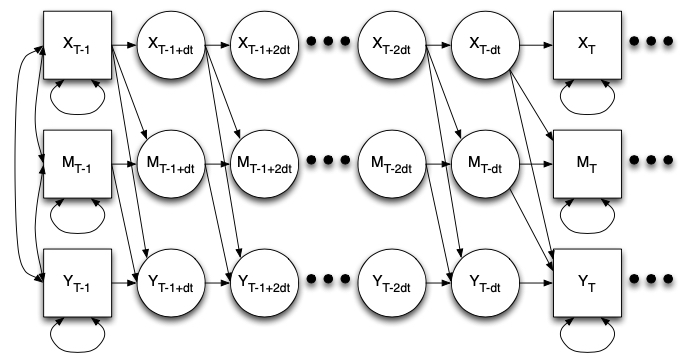Time is unlike any other variable. This chapter considers the difference in perspectives offered by discrete-time and continuous-time approached to mediation. The differences in how one conceptualizes time have the potential to alter core mediation concepts as direct and indirect effect, complete and partial mediation, and even what constitutes a “mediation” model.
Abstract
Time is unlike any other variable collected in the social, behavioral, and medical sciences. Research participants who are sampled, and variables that are measured, come in distinct, discrete units. Although time is often recorded in such discrete units (e.g., wave 1, grade 3, day 5), time is markedly different from either participants or variables. Sampling time points is unlike sampling people or variables, as there are an arbitrary number of additional samples that can be collected between any two occasions of measurement. These interstitial samples are ignored by many longitudinal modeling paradigms. These observations that occur between sampling occasions form the basis for the perspectives on mediation explored in this chapter. We focus on the difference in perspectives offered by discrete-time approaches commonly utilized in mediation research versus models that conceptualize time as a continuous variable. The differences in how one conceptualizes time have the potential to alter such core mediation concepts as direct and indirect effect, complete and partial mediation, and even what constitutes a “mediation” model.
Citation
Deboeck, P. R., Preacher, K. J. & Cole, D. A. (2018). Mediation Modeling: Differing Perspectives on Time Alter Mediation Inferences. In K. van Montfort, J. Oud \& M. Voelkle (Eds.) Continuous Time Modeling in the Behavioral and Related Sciences. Springer.
